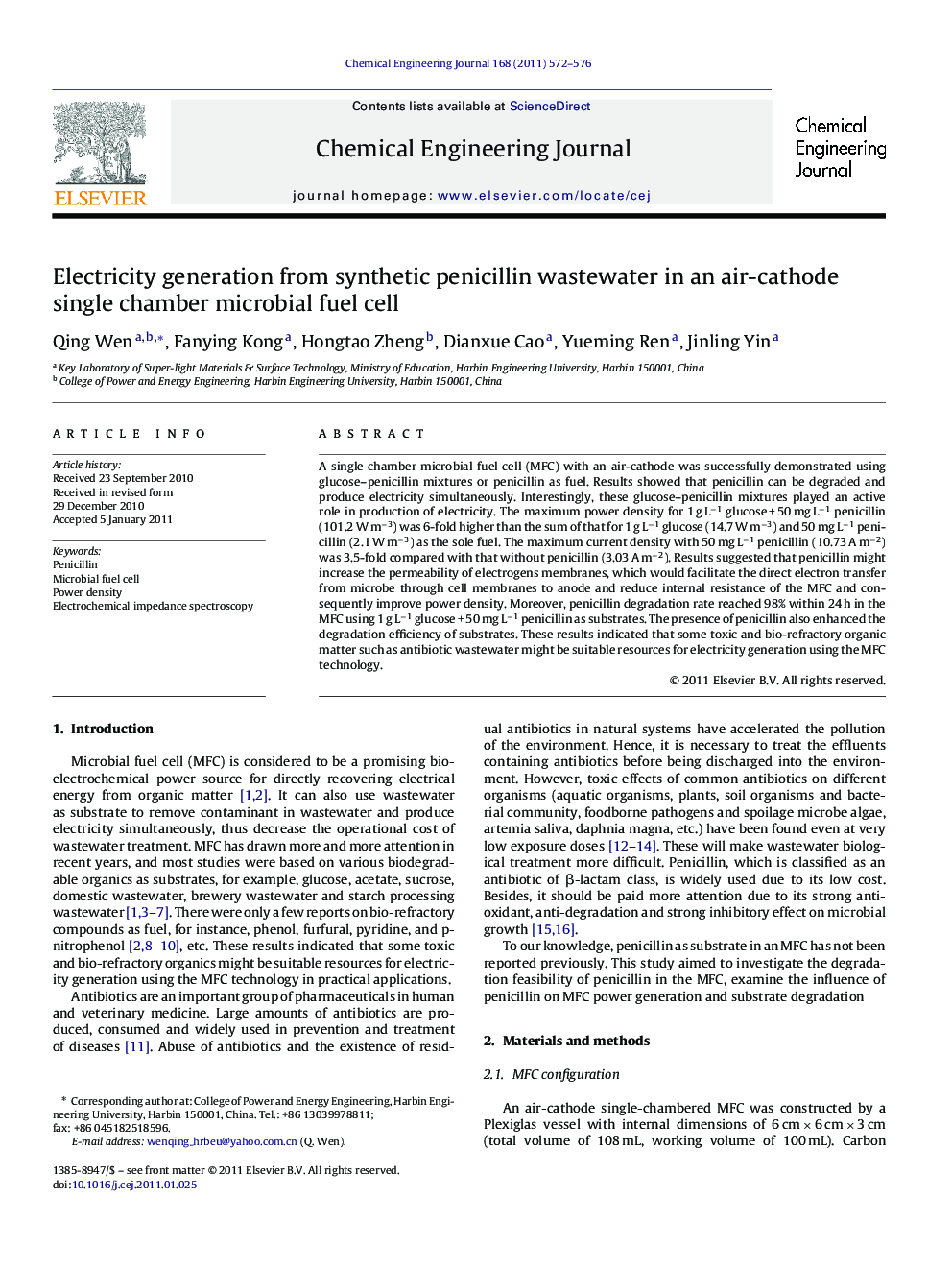| Article ID | Journal | Published Year | Pages | File Type |
|---|---|---|---|---|
| 151345 | Chemical Engineering Journal | 2011 | 5 Pages |
A single chamber microbial fuel cell (MFC) with an air-cathode was successfully demonstrated using glucose–penicillin mixtures or penicillin as fuel. Results showed that penicillin can be degraded and produce electricity simultaneously. Interestingly, these glucose–penicillin mixtures played an active role in production of electricity. The maximum power density for 1 g L−1 glucose + 50 mg L−1 penicillin (101.2 W m−3) was 6-fold higher than the sum of that for 1 g L−1 glucose (14.7 W m−3) and 50 mg L−1 penicillin (2.1 W m−3) as the sole fuel. The maximum current density with 50 mg L−1 penicillin (10.73 A m−2) was 3.5-fold compared with that without penicillin (3.03 A m−2). Results suggested that penicillin might increase the permeability of electrogens membranes, which would facilitate the direct electron transfer from microbe through cell membranes to anode and reduce internal resistance of the MFC and consequently improve power density. Moreover, penicillin degradation rate reached 98% within 24 h in the MFC using 1 g L−1 glucose + 50 mg L−1 penicillin as substrates. The presence of penicillin also enhanced the degradation efficiency of substrates. These results indicated that some toxic and bio-refractory organic matter such as antibiotic wastewater might be suitable resources for electricity generation using the MFC technology.
